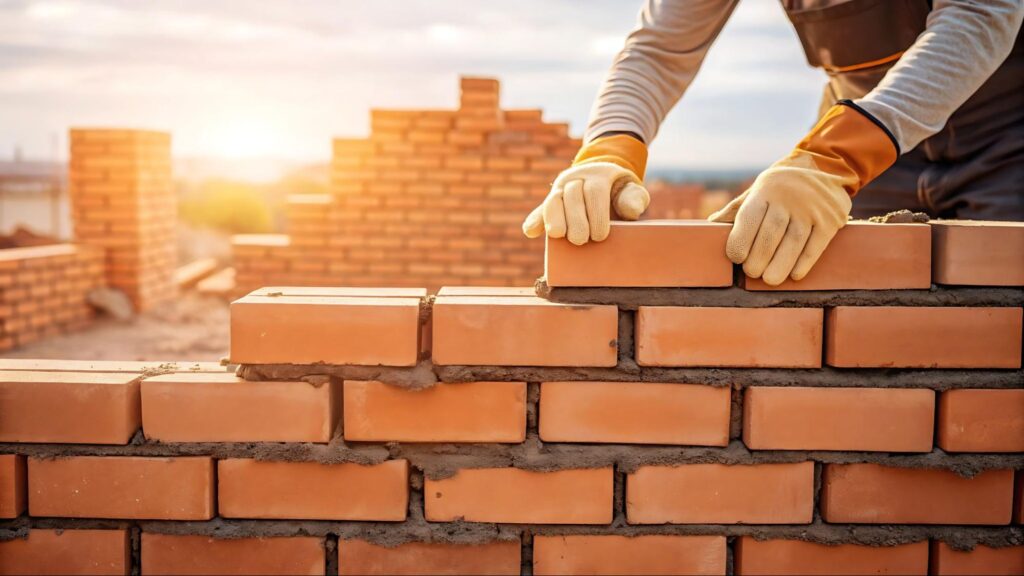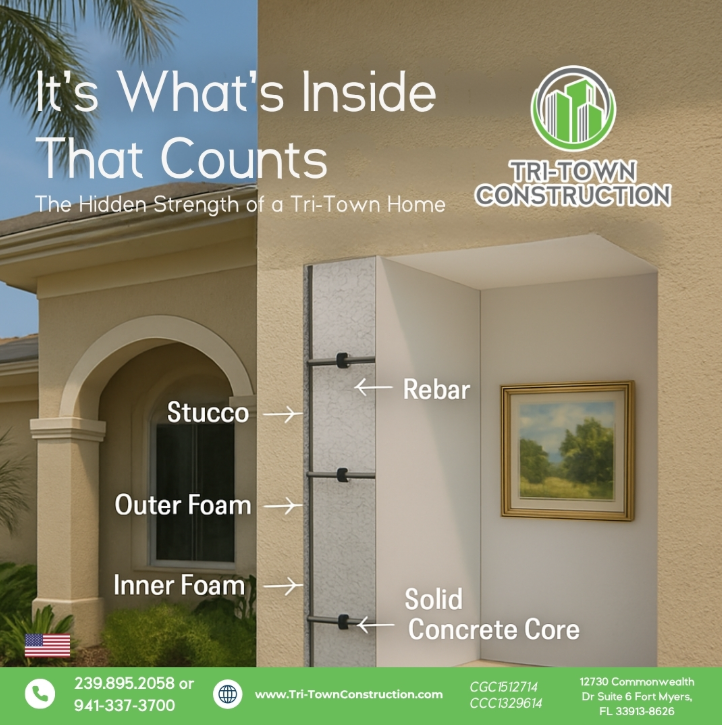Zip Wall Systems: Benefits and Best Practices
Zip Wall Systems integrate sheathing, moisture protection, and air control into one product. They speed up installation, provide structural strength, improve energy efficiency, and balance moisture management, making them a reliable option for modern, durable, and cost-effective homes.
Key Advantages That Make This Integrated Wall System Stand Out
By merging sheathing, housewrap, and air barriers into one integrated layer, this system streamlines construction while enhancing strength, efficiency, and protection for both builders and homeowners.
- Faster builds with two-step installation: attach panels, tape seams.
- Quicker dry-in, so interior work starts sooner.
- Structural strength, rated for seismic and high-wind zones.
- Built-in weather protection that won’t tear like housewrap.
- Energy savings from tight air sealing and reduced HVAC costs.
- Balanced moisture control that resists water but lets vapor escape.
- Warranty protection with a 180-day exposure guarantee.
By tackling air, water, and structural needs at once, Zip offers both builders and homeowners confidence that projects will run smoother and homes will stand stronger.
While the system delivers speed and reliability, it also comes with details every homeowner and builder should know.
From climate-specific advice to smart upgrades, exploring further will show you how to make the most of Zip Wall Systems.
Understanding the Role of Modern Wall Systems in Your Home

Before diving into specific products, it helps to understand what a wall system is supposed to do.
A good system does far more than hold up drywall, it protects your home from the elements, manages airflow and moisture, and helps keep energy costs under control.
1. Structure and Support
At its core, a wall system carries the load of your home.
The panels, framing, and connections make up the backbone that resists wind, supports the roof, and gives your house stability.
Without this foundation, no other part of the system can perform well.
2. Air and Moisture Management
Modern homes are designed to be tighter than ever. A proper wall system acts as an air barrier, sealing out drafts that drive up heating and cooling costs.
It also controls moisture, keeping bulk water out while allowing trapped vapor to dry so mold and rot do not set in.
3. Traditional Layers and Their Drawbacks
The old approach has been layering materials. Builders would install OSB or plywood for structure, then cover it with a housewrap like Tyvek.
While effective when perfect, wraps often rip in wind, wrinkle during installation, or fail if not taped carefully.
Every extra step means more labor, more materials, and more potential failure points.
Integrated systems combine strength, moisture protection, and air control into one product, making construction simpler and more reliable.
Next, we’ll see how the Zip Wall System has reshaped the way builders tackle these challenges.
Also Read → FEMA 50% Rule: Triggers, Exemptions, and What Homeowners Must Know
Why the Zip Wall System Has Changed the Way Builders Work
View this post on Instagram
The Zip Wall System has streamlined how builders put up walls.
Instead of juggling multiple products for structure, water protection, and air control, it brings everything into one integrated system.
This saves time on site, reduces errors, and creates a stronger, more efficient building envelope.
The Core Benefits of Zip Wall Systems
The advantages of this system extend far beyond convenience. Each benefit ties directly into a homeowner’s comfort and a builder’s efficiency.
1. Faster Installation With Less Hassle
With traditional assemblies, builders must fasten sheathing, roll out housewrap, and carefully tape or staple everything in place.
Each step creates room for errors. Zip cuts that down to two steps, attach the panels and tape the seams, saving hours of labor.
2. Quicker Dry-In and Project Efficiency
Once the seams are taped, the structure is effectively “dried in.”
That means electricians, plumbers, and interior trades can get started faster, even if exterior finishes aren’t complete.
For custom homes, this can speed up the schedule significantly and reduce weather delays.
3. Strength Where It Matters Most
Zip panels carry a Structural 1 rating, giving them the shear strength needed in seismic zones and hurricane-prone areas.
That rating makes the system especially valuable in regions like Florida where high winds are a constant concern.
4. Built-In Weather Protection
Instead of relying on housewraps that can tear or wrinkle, Zip’s weather-resistive barrier is factory-applied.
This ensures consistent coverage across the entire wall. Builders no longer have to worry about wrap blowing off in the wind before siding goes up.
5. Energy Savings Through Tight Sealing
Independent testing shows that Zip performs extremely well as an air barrier.
With air leakage rates well below standard thresholds, the system helps lower HVAC costs by keeping conditioned air inside.
For homeowners, that translates into monthly energy savings and a more comfortable living environment.
6. Durability Backed by Warranty
Builders face unpredictable weather, which often means materials sit exposed for days or weeks.
Zip provides a 180-day exposure guarantee, along with a 30-year limited warranty once the home is finished. That long-term protection offers peace of mind to both contractors and homeowners.
7. Balanced Moisture Management
Walls need to breathe while still keeping water out. Zip strikes that balance with a perm rating around 12, allowing vapor to escape while blocking bulk water.

This helps reduce the risk of mold or rot inside the wall cavity.
How Zip Compares to Traditional Methods
Builders often weigh Zip against the older sheathing-plus-housewrap approach.
Both methods can perform well, but the tradeoffs become clear when looking at reliability, speed, and long-term protection.
- Critiques from housewrap makers:
- Taped seams require care to avoid gaps and ensure strong adhesion
- Corners need proper detailing so cladding pressure does not cause stress
- Fasteners must be set correctly to prevent overdriving and maintain barrier integrity
- Why builders still choose Zip:
- Saves labor and simplifies schedules
- Reduces the number of trades involved
- Minimizes common mistakes tied to housewrap installation
Most homeowners never see the green panels hidden behind their siding, but they notice the difference through lower energy bills, better comfort, and long-term durability.
Next, let’s cover the pro tips that help ensure a Zip Wall build delivers on its promises.
Helpful Resource → Florida’s Skilled Labor Shortage: Causes & Opportunities
Pro Tips for Getting a Superior Build With Zip Wall Systems
View this post on Instagram
Even the best materials cannot perform well if they are not installed correctly. The Zip Wall System is no exception.
Its benefits rely heavily on careful installation, climate-aware choices, and smart upgrades that strengthen performance over the long run.
Below are proven practices that help ensure your build lasts for decades.
Installation Musts
Before reaping the benefits of Zip, it’s important to nail the basics.
These are the small steps that protect against common installation mistakes and make sure the system performs as designed.
1. Always Roll the Tape With Proper Tools
Seam tape is the backbone of the Zip system. For it to perform, the tape must be firmly bonded to the panel.
A hand roller applies consistent pressure, creating full adhesion and avoiding the “fish mouths” or lifted edges that often lead to leaks.
2. Use Liquid Flash at Window Bucks and Penetrations
Windows, doors, and pipe penetrations are weak points for any wall system. Applying liquid flashing around openings and penetrations fills gaps that tape alone cannot reach.
This creates a continuous, watertight seal that reinforces one of the most vulnerable areas of the envelope.
3. Prime Tape Areas in Cold Weather
Cold climates present unique challenges. Below about 40°F, tape adhesion can weaken, leading to premature failure.
Using primer before applying tape ensures strong bonding even in low temperatures, protecting against air and water leaks through the life of the building.
4. Seal Overdriven Fasteners With Liquid Flash
Nails that sink too deep can puncture the water-resistive barrier. Each overdriven fastener becomes a potential entry point for water.
A quick application of liquid flashing over those fasteners restores the protective layer and prevents long-term damage.
Mastering these basics ensures the Zip Wall System delivers the performance it was designed for.
With proper installation, you protect against common pitfalls and set the foundation for a durable, efficient build.
Climate-Specific Advice
View this post on Instagram
Every region has unique challenges. Whether it’s humidity in Florida or freezing winters up north, adjusting your approach to match the climate ensures your walls stay durable and efficient.
1. In Humid Florida, Zip Offers Storm Resilience
In high-humidity regions like Southwest Florida, walls face both moisture and wind pressures.
The Zip system creates a tight thermal envelope that helps reduce air conditioning costs while resisting wind-driven rain.
When combined with hurricane-ready design, it adds an extra layer of storm preparedness.
2. In Northern Climates, Add Vapor Control
Cold climates create the risk of condensation inside walls.
Without an interior vapor barrier or added insulation, moisture can become trapped and lead to mold.
Pairing Zip with interior vapor barriers or exterior continuous insulation helps avoid these issues while maintaining efficiency.
Smart Upgrades
While the standard Zip Wall System is strong on its own, there are ways to push performance even further. Strategic upgrades can add comfort, efficiency, and extra resilience to your home.
1. Zip-R Adds Insulation Value
For builders seeking more thermal resistance, Zip-R integrates a layer of foam insulation.
It offers convenience by combining sheathing, WRB, and R-value in one panel. However, it is worth comparing cost and flexibility against traditional assemblies that layer OSB, foam, and wrap.
2. Pair Zip With Exterior Rockwool or Foam
A popular high-performance approach is using standard Zip panels, then adding continuous exterior insulation such as Rockwool or rigid foam.
This not only increases R-value but also provides a buffer against fastener penetrations. Many building scientists consider this approach close to the “perfect wall.”
Pro Insight: Sequencing Matters Most
Even when the right products are used, poor sequencing can undermine performance.
For example, taping out of order, failing to reroll tape after it rains, or installing siding before flashing is fully cured can all compromise the wall system.
A disciplined workflow ensures every layer bonds and cures correctly, locking in the system’s benefits for the life of the home.
With careful installation, climate-smart choices, and thoughtful upgrades, the Zip Wall System can deliver on its promise of efficiency, durability, and comfort.
Final Thoughts: Is Zip Wall the Right Choice for Your Home?

The Zip Wall System has proven itself as a modern solution that combines structure, moisture protection, and air control into one reliable package.
From faster installation and stronger weather resistance to improved energy efficiency and long-term durability, it addresses many of the weaknesses in traditional wall assemblies.
Still, its true performance depends on proper installation, climate-aware adjustments, and smart upgrades that reinforce its strengths.
For homeowners, that means choosing builders who understand both the system and the region’s unique challenges.
If you’re ready to build or rebuild in Southwest Florida, Tri-Town Construction delivers homes designed for strength, efficiency, and resilience.
Let us show you how the right systems create results that last.


